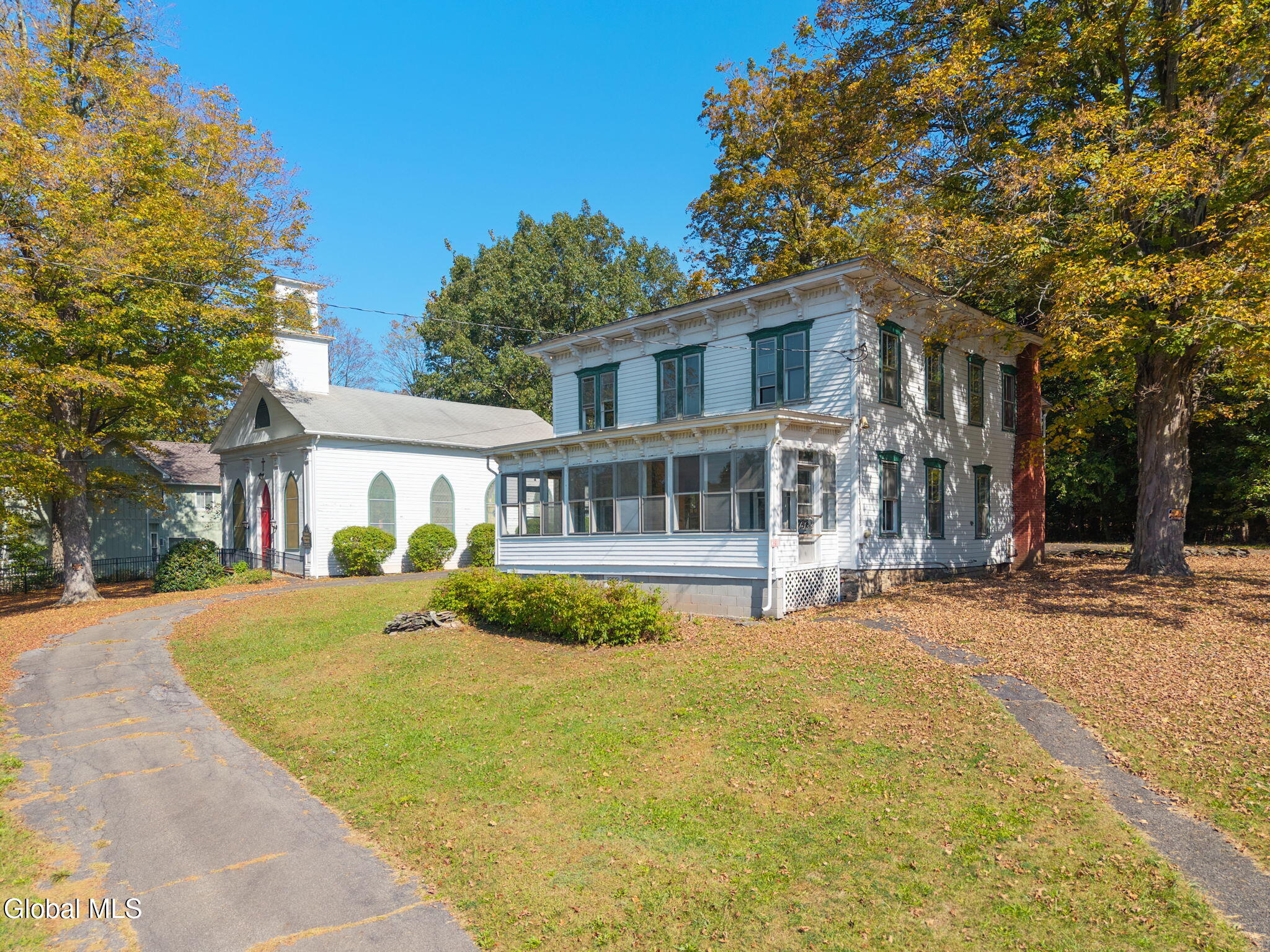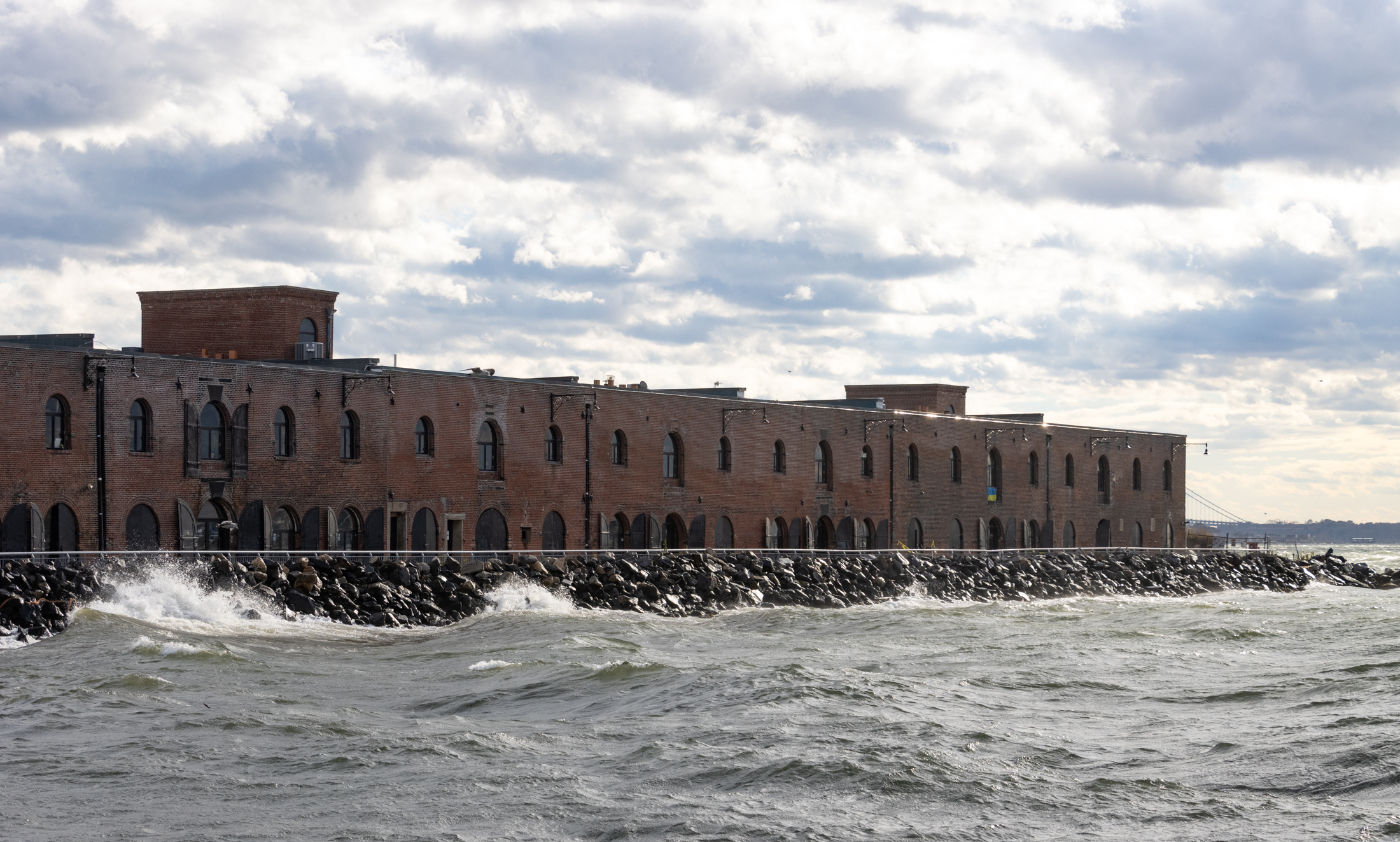Residents Want "21st Century Solution" for BQE
Last night’s meeting of the BQE shareholders was the followup to the previous scare that the reconstruction of the triple-cantilever portion of the BQE could take some historic Brooklyn Heights homes with it. That threat wasn’t on the table last night, but there were serious concerns about how the project, not slated to begin until…


Last night’s meeting of the BQE shareholders was the followup to the previous scare that the reconstruction of the triple-cantilever portion of the BQE could take some historic Brooklyn Heights homes with it. That threat wasn’t on the table last night, but there were serious concerns about how the project, not slated to begin until around 2018, would evolve. There are currently nine proposals for reconstruction, with the cost ranging from $200 million to $20.7 billion. The cheapest plan, which was criticized as a “paint job,” would be a rehabilitation of the current alignment of the BQE. The most expensive plan involves an “outboard tunnel connecting Greenpoint (BQE exit 33) to the north and Sunset Park to the south (65th Street).” All the options are drawn out in the map above, and you can click through to read all of the proposals. The biggest concern in the audience was the actual budget of the plan, which has not yet been determined. The next meeting should happen in about one month and reveal more as to plausible options based on funding. Meanwhile, one member of the audience urged the reps from the State DOT to “stop acting like a 3rd world country” (concerning the simplest of rehabilitation plans) while another said “Rebuilding the 1920s design is absolutely stupid.” Instead the crowd asked for a “21st century solution,” with an audience member saying, “We need to bring Brooklyn to the 21st and 22nd century.”
Heights Homes Could Be Taken in BQE Fix [Brownstoner]
R-1: Rehab with current alignment. Cost: $200-280M
CS-1: Would closely follow the existing alignment to avoid built structures. Cost: $788-988M
T-1: Tunnel with horizontal alignment following Hicks/Henry St. to Tillary. The existing BQE infrastructure would be maintained as a collector-distributor roadway. Cost: $2.28B-2.95B
T-2: Tunnel with horizontal alignment similar to the existing alignment. Cost: $3,61B-4.73B
T-3: Tunnel alignment approximately north of the existing alignment with a subaqueous segment between Atlantic Avenue and Doughty Street. Cost: $4.46B-5.87B
W-1: Tunnel with horizontal alignment approximately following Willow Street to Tillary Street. Cost: $4.45B – 5.79B
W-2: Horizontal alignment would run approximately in a straight line tunnel between BQE exits 24 and 30 – avoiding neighborhoods approximately west of 4th-Lafayette-Washington Avenues. Cost: $4.89B-$6.38B
W-3: Outboard tunnel connecting Greenpoint (BQE exit 33) to the north and Sunset Park to the south (65th Street) Cost: 15.03B-20.7B
W-4: Tunnel with horizontal alignment following 4th Ave, and curve east north of Flatbush Ave to meet the BQE at Exit 30 (Park Ave.) Cost: $6.68B-8.77B





Two words: Big Dig
I agree on the tunnel. I remember attending a presentation out in Sunset Park maybe 10 years ago on replacing the Gowanus expressway with a tunnel and have not heard anything since.
By a tunnel under the water, do you mean something like a plexiglass tube (sort of like the hamster habitat we had as children)? That would be so cool as to be worth whatever the cost.
Oh and Nokilissa, this statement is laughable:
“That they have a political system not bought and paid for by corporate interests?”
FAR more Japanese politicians are brought down by charges of corruption, usually outright bribes by the powerful construction industry.
In this context, an “outboard tunnel” is one under the water.
I assume a tunnel “following 4th Ave” would be very deep and/or not exactly under 4th avenue.
Any tunnel plan will have to deal with a maze of subway tunnels, and I am guessing that building any of the tunnel options will cost at least double the current estimates.
I predict that no tunnel option will ever get past the planning stage. The cost is way too high for the benefit.
Nokilissa;
Is there ANY issue that you don’t see as an opportunity to shill for your ideology?? Since you mentioned Japan, you should know the following:
a) Japan’s public debt to gdp ratio is 200%, by far the highest in the developed world. It is an albatross around their economy.
b) If you state that Japan’s economy is in good shape, you obviously do not read up on the topic much. Japan’s economy has been dead-in-the-water since their real-estate bubble collapsed. The Japanese themselves refer to the period since that collapse as “The Lost Decades”.
A retro 20’s design would be cool.
I like the outboard tunnel scheme.
keep the existing cantilevers as a tiered park. A double highline.
Getting away from the important “where is my jet pack” question, what is meant by “rebuilding the 1920’s design”? I thought the BQE was designed and built in the late 1950’s and 1960’s.
Frankly, I think the existing system works fine. I don’t think we are expecting any significant growth in automotive transport through here, so why spend billions to change it? (and I am all for spending billions where they are needed) I do sympathize with creating better access for emergency vehicles, but I am not sure that any change is otherwise worth it.
Also, for the engineering geeks out there I have some questiosn, what is an “outboard” tunnel? And how can one tunnel under 4th Avenue without ripping up the BMT line for 8-10 years?
Oh, and this:
According to deputy chairman, the government’s new fiscal plans will include a cancellation of the planned corporate tax rate decrease and a 2 percent hike to the country’s sales tax, among other measures devoted to raising government revenues. All additionally raised revenues will be devoted to rebuilding infrastructures and facilities damaged by recent earthquakes, tsunamis and nuclear disasters. In a recent survey conducted by Japan’s Kyodo News network nearly 68 percent of citizens indicated that they would support tax rate hikes, if all the raised revenues are devoted to specified relief programs.